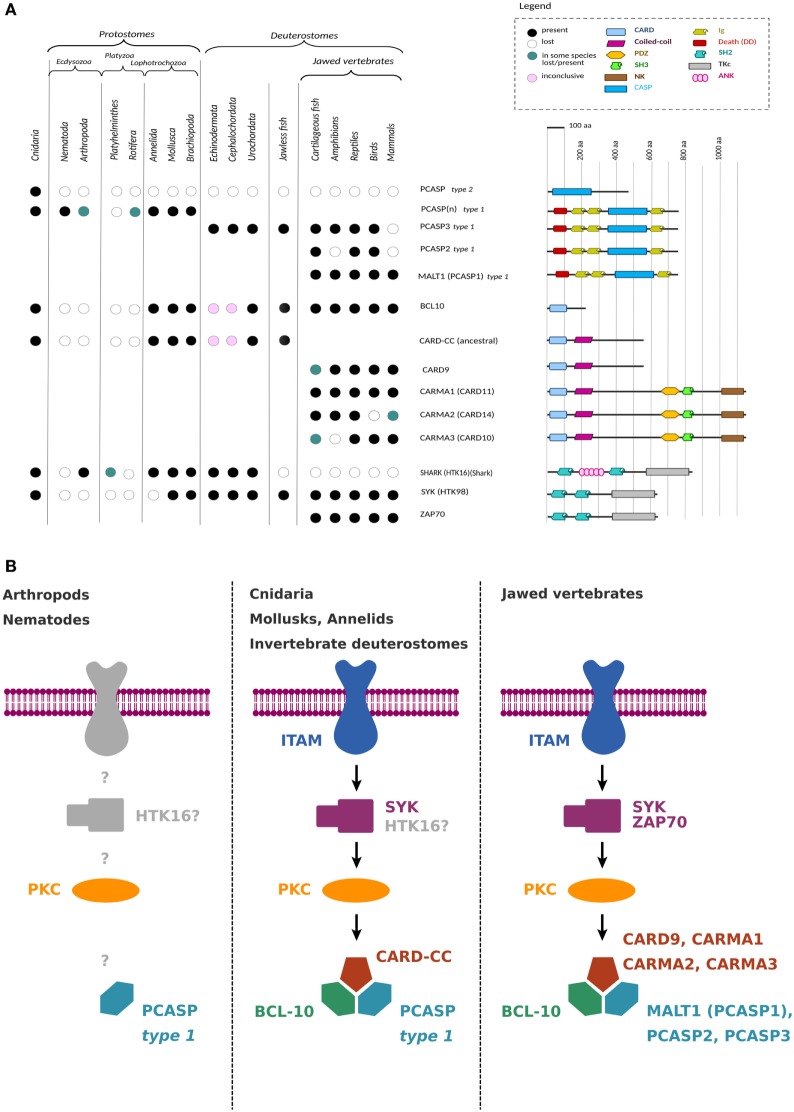Figure 1.
Coevolution and proposed signaling model. (A) Patterns of coevolution of Syk and several CBM complex components in various organisms within the planulozoan clade. Type 1 paracaspases prior to Deuterostomes were annotated as PCASP(n) since currently available invertebrate genome sequences cannot determine whether a distant paracaspase is an ancient PCASP3 paralog or ortholog. One model proposes two ancient type 1 paracaspases, one Bcl10-dependent and one Bcl10-independent. The CARD–CC/Bcl10-dependent type 1 paracaspase shows MALT1-like activities. Deuterostomia (including tunicates, lancelets, vertebrates, and hemichordates), annelids, and mollusks inherited the Bcl10-dependent type 1 paracaspase, whereas most other bilaterian invertebrates kept the Bcl10-independent type 1 paracaspase. The model is based on currently available reliable sequence information and might change with additional data. Analogously, CARD–CC became duplicated and later fused with MAGUK domains in the jawed vertebrates. At this moment, we are uncertain about which of the four jawed vertebrate CARD–CC paralogs (CARD-9, -10, -11, -14) should be considered the ortholog of the ancestral CARD–CC. Also, upstream Syk became duplicated in jawed vertebrates, resulting in Zap70. (B) Proposed signaling model in various organism classes. Nothing is known about upstream activators of type 1 paracaspases in CARD–CC/Bcl10-independent organisms such as arthropods and nematodes.

